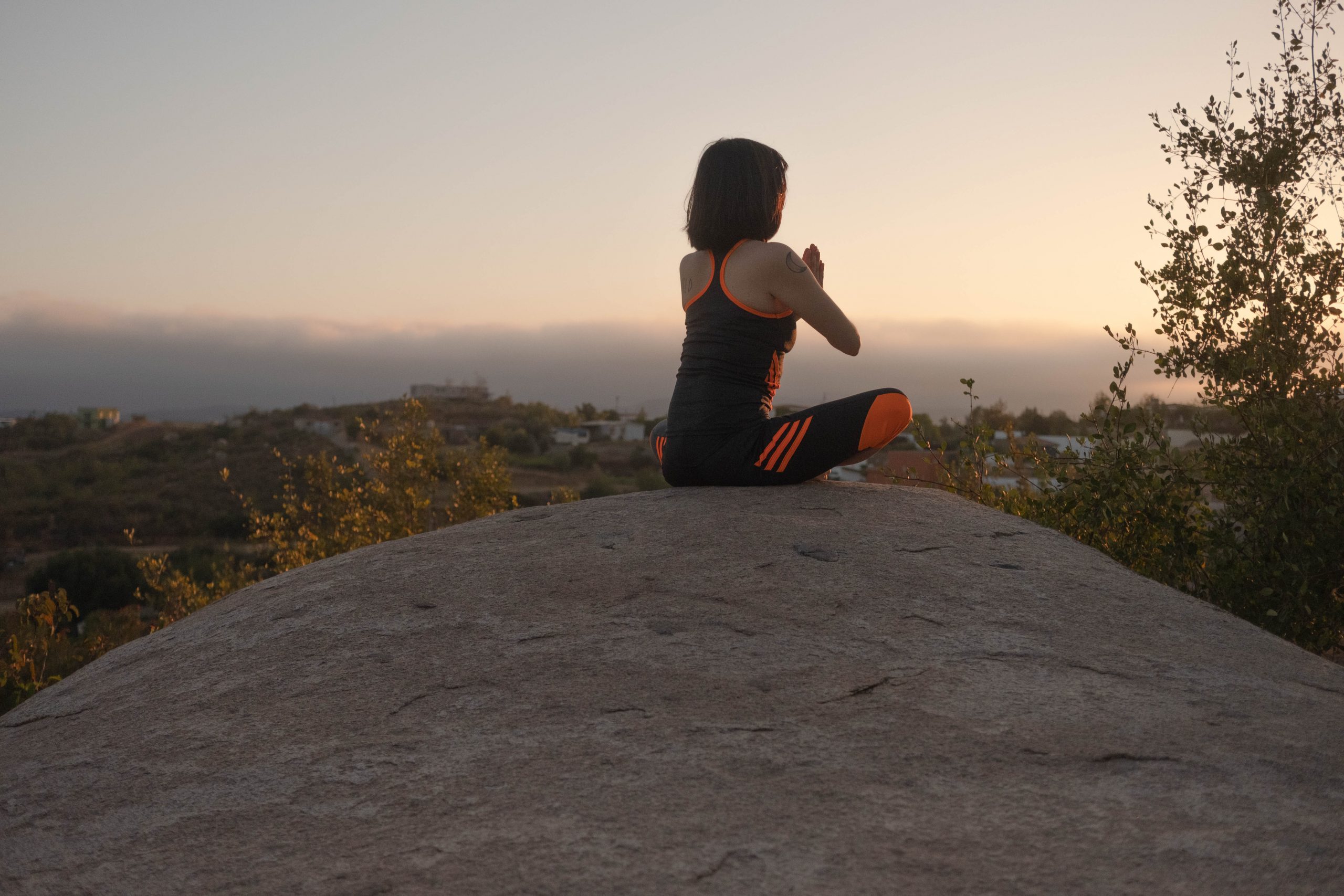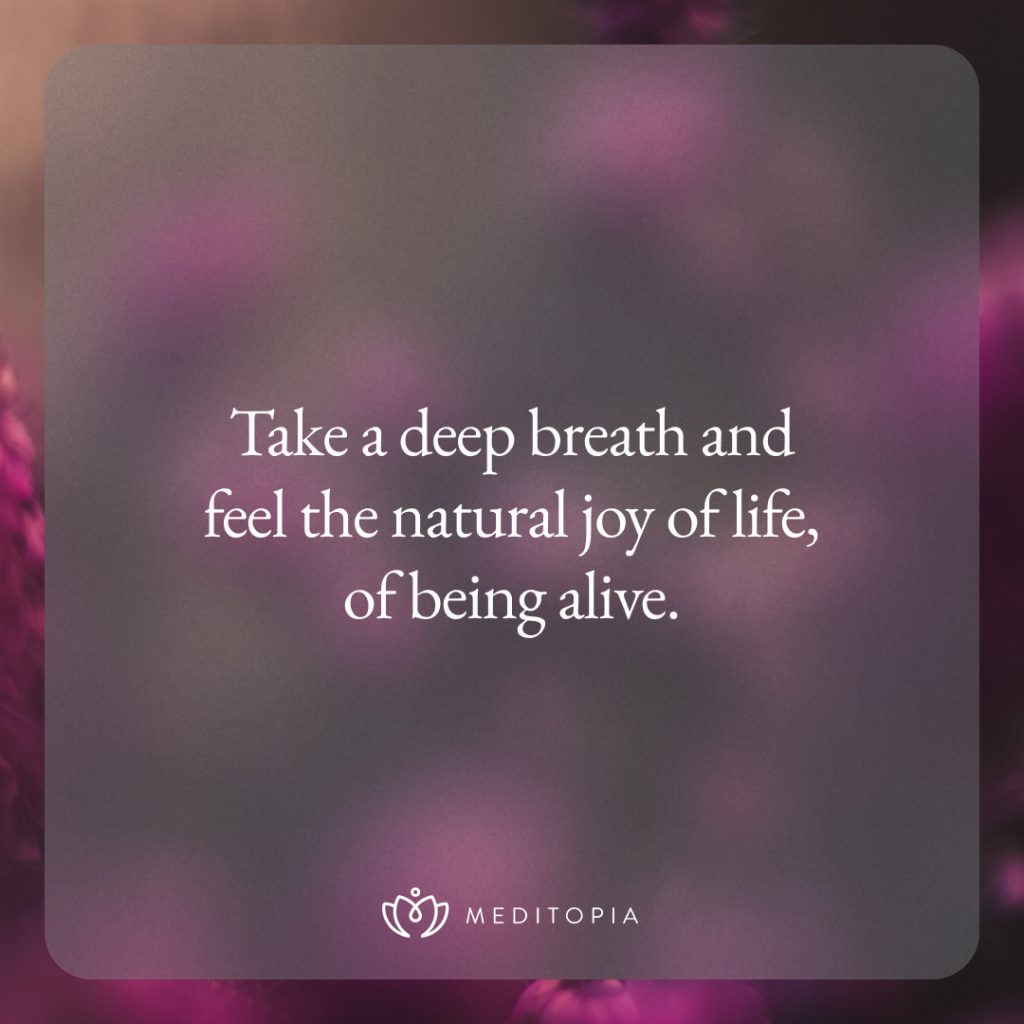Meditation Types

Table of contents
Meditation is a concept that’s as old as the existence of humankind. And, like other ancient teachings, beliefs, and concepts, it’s been interpreted over and over again in different ways, through different times, and across different geographies. Despite these reinterpretations, the essence of the practice always stays the same. However, there are many tools that can be used as you approach meditation and that’s why the number or the types of practices may increase significantly.
The most basic meditation practices are used to increase awareness and attention, keeping both of them in the present moment. To focus on the present moment, we generally pick an anchor. By discovering the qualities of this anchor, we try to keep our focus on it with compassion and without judgment. This sounds a bit abstract, right? Okay, let me explain… Let’s assume that we picked our breath as an anchor. When we focus on our breath, we notice its quality from the rhythm, depth, and length of each inhale and exhale. When our mind starts to wander, we can notice that distraction and actively bring our focus back to our breath again. So, this is one way an anchor can helps us come back to the moment.

Our mind has a tendency to get distracted by its very nature and that’s why we start thinking about external factors or feel the need to move our body. To be able to manage our attention, our anchor plays an important role, tying us to the present.
The type of meditation you do generally varies depending on your anchor. In many teachings, the body is considered like a shell with different layers. So, our body, emotions, thoughts, sensory stimuli, and knowing we perceive these things are all interrelated. They all affect one another and are also affected by others in turn. Therefore, to have a closer look at ourselves, we can work with each of these layers. Selecting our emotions or one of our senses as an anchor can help us understand the way we experience the world. Just like we can stay in the present and observe our mind instead of being carried away by our thoughts, observing our body or keeping our attention on a sensory object can help us bring a sense of calm to our system.
Let’s go over the meditation types that you’re likely to encounter and the anchors that are most commonly used. While each meditation type differs, there are a few shared steps within all meditation pratices.
All meditation practices start with finding a comfortable sitting position. If that’s not possible, you’re also welcome to lie down. First, we bring our attention to our posture, to our body and to our environment. In other words, we focus on the exact moment and place we’re in. Here, we can also take a few deep breaths and exhale slowly. The goal is to tell our system that we’ve stopped whatever we were doing a few minutes ago and we’ve begun to focus now. After this getting settled, we can start our practice by being present in our body and in the moment.
1- Breathing Meditation
In breathing meditations, we practice bringing our attention to our breath and trying to keep it there. While there are many breath-focused meditations, paying attention to our breath is something that we may experience in other practices as well. Our goal here is to invite ourselves to the present moment and direct our attention to our breath when we notice we’re getting distracted or find our mind starting to wander.
As we continue breathing, we shift our focus to the movement, flow, and quality of our breath within our body. Is your breath deep or shallow? Where do you feel your breath the most in your body? If you bring your attention to your breath every time your mind gets distracted, your mind starts to calm down after a while and concentrating becomes more effortless. You may notice that the amount of distracting thoughts decreases and you may even come to a point where you don’t need an anchor anymore. Some people also experience a sense of emptiness. This shows that your mind has switched off its everyday mode and transitioned to a meditative state. If you have such an experience, please remember that this is very normal and keep breathing gently in and out.
If you need a simple practice to start, you can begin with a counting practice. How? Bring your attention to your breath and start counting when you inhale and exhale: Inhale, exhale 1; inhale, exhale, 2… When you get to 10, start over. If you forget the count, you can start over at 1 again. With this practice, you can begin to observe how active your mind is.
2- Body Awareness Meditation
Body awareness can be improved with the help of different disciplines. Many athletes, dancers, or people who work regularly with their bodies may go a long way in terms of gaining body awareness. Also, one of the 8 steps of yoga, which explores how to reach the ultimate meditative state, focuses entirely on physical practice.
If we want to use and improve body awareness in our meditation practice, one of the basic exercises we can do is a body scanning meditation. In this practice, our anchor is our body and we direct the light of our attention to all parts of our body one by one. From top to bottom, starting from our head to our feet, we pick each part of our body as an anchor for a while. By bringing our attention to the many aspects of our physical features, movements, and sensations in the area we’re focusing on, we explore being in our body and the present moment.
Apart from that, focusing on only one part of the body is another option. For example, in one of your practices you can focus on your abdominal area and choose the movement of your breath in your belly and the sensations you feel there as your anchor.
Like other practices, body awareness meditations are effective tools to transition your mind from the state of doing to the state of being. Connecting with all bodily sensations that are constantly changing also increases our capacity to stay in touch with our body when we get carried away by our emotions or feel stressed. Body scanning is also one of the fundamental steps of self-regulation and self-compassion.

3- Sensory Awareness Meditation
Practicing sensory awareness means focusing on the input we receive via our senses. You can sit in meditation and focus only on your sense of hearing by bringing your attention and awareness to the present moment and place you’re in. Notice the sounds you hear and the feeling of being the one who hears and perceives these sounds without reacting or making any judgments. Just like the thoughts passing through your awareness, let these sounds come and go. Similarly, you can experience your sense of sight by resting your gaze softly on a certain point.
These are examples of practicing meditation using only one of your five senses. You can also do a meditation to scan your awareness using all of your senses. For example, you could bring your awareness first to what you see and then shift your focus to the sounds you hear. Afterward, you could focus on the taste in your mouth and then end your practice by shifting your attention to your clothes and the surfaces touching your skin.
4- Emotional Awareness Meditation
Emotions are experiences that manifest in our system like physical stimuli, sensations, or thoughts. However, working on our emotions may be difficult, especially when we’re alone.
Emotions are often the by product of our physical experiences and situations that we go through. Anger may manifest to show us that we feel we’ve been subjected to an injustice, that our boundaries might have been crossed, or that we’ve had an undesirable experience. Some emotions might be stronger, more intense, and difficult to manage. In such extreme cases, it’s unreasonable to pick an emotion as a focal point. We might need to look at these areas with the help of a counselor, therapist, or coach.
When we want to practice emotional awareness, we can use our emotions as anchors that manifest in that moment just like when focusing on our breath. If you notice that you’re experiencing intense feelings, but can’t distinguish your emotions, you can try labeling your emotions first. You can visualize that feeling and observe its reflections within your body. Where do you feel your emotions the most? What would they look like if they had a shape, a color?
While looking at our emotions, we explore being in a state of “feeling and observing” without making any judgments. Commenting on your experiences, analyzing them, and letting your mind take control prevents us from experiencing the emotion itself. We look for a space of awareness where we can connect with our emotions without ignoring them or getting carried away. When we can achieve that, our emotions just flow freely because we’ve opened up a space for them to manifest.
My advice is not to push yourself to work with very challenging or intense emotions. It may also be difficult to connect with your emotions before connecting with your breath, thoughts, and body. For this reason, I suggest starting to work with other layers first and then step into the emotional layer.
5- Thought Awareness Meditation
If you imagine your mind like a factory, it wouldn’t be wrong to say that your thoughts are the products of this factory. Your internal processes, emotions, physical environment, and the condition of your body affect the factory’s operation.
We often actively get involved in the thoughts that our mind generates and take part in this endless thought process. However, we define the state of observing and witnessing these thoughts without judgment as meditation. When our mind calms down and our thoughts become quieter, our system is ready to discover, to make new connections, and to observe from a realistic perspective. That’s why working on our thoughts is the foundation of mindfulness.
Pick an anchor for a thought awareness practice. The breath is the most common one. If you’d like, you can focus on your breath flowing in and out of your body or the movement of your breath in a certain part of your body. You can also shift your focus to your body or your senses, using either as your anchor. The point here is to observe your thoughts coming and going. If your mind starts to wander, you can gently bring your focus back to your anchor.
The moments when you notice that your thoughts start to intensify are very valuable. Remember that the mind is very active and constantly changing. So, when you realize that you’re getting carried away by your thoughts, all you need to do is to go back to your anchor without analyzing or judging the situation. Please keep in mind that there’s no “right” or “wrong” in this practice.
No matter which type of meditation you choose, don’t forget that the mind can only change through practice. When you find the kind of meditation that works best for you, try to practice it every day, even if just for a short period of time.

6- Visualization Meditation
Pushing ourselves to focus on a certain anchor can cause our minds to get a bit nosier. That said, putting in the right amount of effort can help us keep our attention on our anchor. That’s why we work with the visualization meditation. Visualizing an image in our mind is a practice that requires our attention and some effort, but doesn’t push us a lot.
With the visualizing technique, we can imagine objects, shapes, colors, or a person. We close our eyes and visualize that thing in our mind and keep our focus there. In meditations that prepare the body and mind for sleep, it’s common to visualize a scene somewhere in nature, a well-known place in the world, or completely imaginary places. If you haven’t tried the visualization technique before, here are some tips for you:
Before you close your eyes, pick up an object. Examine it carefully. Notice its color, shape, and all its details. Afterward, sit in meditation and visualize that object in your mind. You can continue practicing while focusing on that image.
7- Metta Meditation
In Buddhism, “Metta” means mercy, kindness, friendship, goodwill, and closeness. We’d like to plant and grow the metta seed that’s been carried from ancient Buddhist teachings to present day.
Metta practices support and enhance the good feelings and attitudes within us. These practices invite our inner critic to start quieting down. In time, we develop more tolerant, open, and affectionate awareness toward ourselves and others.
Metta can be practiced in several different ways. First, we need to evoke feelings of compassion within our system. Then, we ground ourselves here by using these feelings as our focus, our anchor. Here are some of the steps that you can take to practice being compassionate toward others around you:
- To start, find a nice, comfortable seated position. As you settle in, notice your breath and body, gently inviting yourself to the present moment.
- Allow yourself to focus on your breath for a while and then slowly start visualizing someone or something that you feel close to. This can be your best friend, your pet, your partner, or a child. If you’d like, you can visualize that living being in your mind or you can also imagine how you feel about them in a way that’s comfortable for you.
- Let these kind emotions awaken within you and expand throughout your system.
- As these gentle feelings continue expanding, express any kind wishes for the person or thing you’ve been visualizing. For example, you could say: “May you be free, happy, and full of peace.”
- Continue your practice by focusing on the sensations that these affectionate emotions and wishes have created in your body, heart, and breath. And whenever you feel comfortable, you can end your meditation, keeping this awareness with you.

